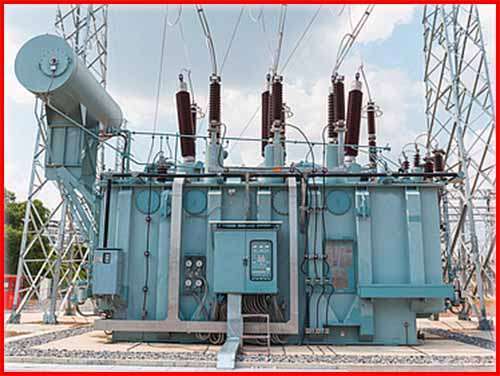Fault Current of Transformer: Best Guide
The fault current of transformer is a crucial concept in electrical engineering. It refers to the high current that flows through a transformer during a short circuit or fault condition. Understanding this phenomenon is essential for system protection, equipment selection, and overall network safety. Fault current can damage transformers and other devices if not properly managed. That’s why calculating and analyzing it is so important.

When a fault like a short circuit occurs, the impedance of the system drops drastically. As a result, a massive current starts flowing almost instantaneously. This current can be several times higher than the normal operating current. The magnitude depends on the transformer’s rating, its impedance, and the network conditions.
The fault current of transformer also influences the choice of protective relays and circuit breakers. These devices must be able to detect and interrupt fault currents without delay. Hence, engineers must carefully analyze transformer faults during design and system planning.
Fault Current of Transformer Explained
During a fault, especially a three-phase short circuit, the current that flows through the transformer is dictated by its impedance. The lower the impedance, the higher the fault current.
A transformer’s impedance is usually given as a percentage on the nameplate. This value is essential in calculating fault currents.
The fault current of transformer is highest at the secondary side of the transformer, closest to the fault point. From there, the fault current reduces as it moves away from the source due to system impedances.
Technical Parameters Affecting Fault Current of Transformer
Several factors influence the fault current of transformer, including:
- Transformer impedance (%Z)
- Transformer rating (in kVA or MVA)
- System voltage (primary and secondary)
- Type of fault (three-phase, single-line-to-ground, etc.)
- X/R ratio (inductive to resistive component of the network)
Let’s go deeper into each.
Transformer Impedance
This is the internal resistance and reactance offered by the transformer to the flow of current. A transformer with 5% impedance means it will allow full load current to flow when the voltage drops by 5%. Lower impedance means higher fault current. For protection systems, this is a vital detail.
Transformer Rating
This is the rated power output of the transformer. A transformer rated at 1000 kVA with 5% impedance will have a higher fault current than a 500 kVA transformer with the same impedance.
System Voltage
The voltage level at which the transformer operates determines the base current. Since current is inversely proportional to voltage in a power system, the lower the voltage, the higher the current for the same power level.
Formula to Calculate Fault Current of Transformer
Here is the basic formula to calculate the fault current of transformer at the secondary terminals:
Fault Current (Iₓ) = (Transformer kVA × 1000) / (√3 × V × %Z / 100)
Where:
- Iₓ = Fault current in amperes
- Transformer kVA = Rated transformer capacity
- V = Voltage level (line-to-line) in volts
- %Z = Impedance in percent (from nameplate)
Alternate Formula Using Base Current
You can also use the base current and impedance to calculate fault current.
Base Current (I_base) = (Transformer kVA × 1000) / (√3 × V)
Fault Current = I_base / (Z / 100)
Example of Fault Current of Transformer
Let’s assume a transformer has the following specifications:
- Rated Power: 1000 kVA
- Voltage: 11 kV
- Impedance: 6%
We calculate the fault current at the secondary terminal:
Iₓ = (1000 × 1000) / (√3 × 11000 × 6 / 100)
Iₓ = 1,000,000 / (1.732 × 11000 × 0.06)
Iₓ ≈ 1,000,000 / 1143.36 ≈ 874 A
So, the fault current of transformer in this case is around 874 amperes.
X/R Ratio and Fault Current of Transformer
The X/R ratio affects the DC component of the fault current. A higher X/R ratio indicates a more inductive system and leads to higher peak currents. This is important for designing protection systems like circuit breakers which must withstand this peak without damage.
In AC systems, the asymmetrical fault current is higher than the symmetrical fault current due to this DC offset. The peak asymmetrical current can be nearly 2.5 times the symmetrical fault current in extreme cases.
Peak Fault Current Formula
I_peak = √2 × I_symmetrical × (1 + e^(-π / (X/R)))
Where:
- I_peak = Peak fault current
- I_symmetrical = Symmetrical fault current
- X/R = Reactance-to-resistance ratio
This formula is important in mechanical design and selection of switchgear and cables.
Fault Current Duration and Energy
The amount of energy released during a fault depends not just on the current but on the duration of the fault. Energy (I²t) is a product of the square of the current and time. This parameter is essential for thermal analysis of transformer windings and fuses.
Transformer Fault Types
The fault current of transformer can vary based on the fault type. The most common types include:
- Three-phase fault: Produces the highest fault current.
- Line-to-line fault: Less severe than three-phase.
- Single line-to-ground: Most common but produces moderate fault current.
- Double line-to-ground: Involves more energy than single-line faults.
Each fault type leads to different magnitudes of current and requires different protective strategies.
Fault Current Table Based on Transformer Ratings
| Transformer Rating (kVA) | Voltage (V) | %Z | Fault Current (A) |
|---|---|---|---|
| 100 | 415 | 5 | 2784 |
| 250 | 415 | 6 | 5776 |
| 500 | 11000 | 6 | 437 |
| 1000 | 11000 | 5 | 1050 |
| 2000 | 11000 | 5 | 2100 |
This table assumes a three-phase fault at the transformer secondary terminal. Actual values can vary depending on grounding and network impedance.
Importance of Calculating Fault Current of Transformer
Calculating the fault current of transformer helps ensure safety and reliability. If not addressed, fault currents can:
- Cause transformer winding damage
- Destroy cables and busbars
- Trip upstream and downstream protection devices
- Lead to fire or explosion in extreme cases
By estimating fault current, engineers can choose proper circuit breakers, set protective relay values, and size conductors correctly.
This analysis also helps to comply with standards like IEC 60909 which describes methods to calculate short-circuit currents in power systems.
Transformer Protection Based on Fault Current
Transformers are typically protected using the following methods:
- Overcurrent relays
- Differential relays
- Buchholz relay (for oil-immersed transformers)
- Earth fault relays
- Fuses (especially in distribution transformers)
The selection of each device depends on the calculated fault current of transformer. If the protective gear is underrated, it can fail to isolate the fault, putting the whole system at risk.
Transformer Impedance and Fault Current Reduction
Sometimes, transformers are designed with higher impedance to reduce fault current. This is a trade-off because higher impedance leads to higher voltage drops under load. Utilities must balance between reducing fault current and maintaining voltage regulation.
In large networks, impedance transformers are used to limit short-circuit currents. These are custom-designed with high reactance.
How to Calculate Fault Current
To calculate fault current, follow these steps:
- Identify the transformer rating in kVA
- Obtain voltage (V) and %Z from nameplate
- Use the formula:
Fault Current = (Transformer kVA × 1000) / (√3 × V × %Z / 100)
If dealing with a complex network, software like ETAP, DIgSILENT, or MATLAB can simulate fault currents more accurately.
The above process is the same as described in your post on how to calculate fault current. It’s the backbone of electrical protection studies and coordination.
Transformer Grounding and Fault Currents
The grounding method used in the transformer also affects fault currents. A solidly grounded transformer will allow higher ground fault currents, while a resistance-grounded transformer will limit them. This influences not only fault current magnitude but also the detection method and protection design.
Fault Current of Transformer in Renewable Systems
In renewable energy systems, especially solar and wind, transformers connect inverters to the grid. These transformers must still handle fault conditions. However, fault current in inverter-based systems is often limited due to current-limiting features of power electronics.
This makes protection design more complex. It also influences your study on Smart Grid Technology and Renewable Energy, where integrating renewables demands accurate fault current analysis for hybrid systems.
Fault Current vs Load Current
It’s important to distinguish fault current of transformer from normal load current. Load current is the current drawn during normal operation. Fault current is several times larger and only occurs during abnormal conditions.
Understanding this difference is vital when selecting circuit protection and performing Energy Management System in Smart Grid analysis. EMS systems must recognize this spike and act quickly to isolate it.
Conclusion
The fault current of transformer is a critical factor in power system design and operation. It affects equipment sizing, protection coordination, and network stability. Knowing how to calculate it, analyze it, and mitigate its effects helps in designing robust and safe electrical systems.
Every engineer working with transformers must understand this concept. Whether you’re designing a new substation or maintaining an existing grid, fault current analysis should be at the center of your planning. Use the formulas, understand the parameters, and apply the technical insights to create a safer electrical environment.
Follow Us on Social:
Subscribe our Newsletter on Electrical Insights to get the latest updates in Electrical Engineering.
#FaultCurrent, #TransformerFault, #ElectricalEngineering, #PowerTransformer, #ShortCircuitCurrent, #TransformerProtection, #FaultAnalysis, #ElectricalSafety, #TransformerDesign, #PowerSystem, #FaultCalculation, #SubstationEngineering, #HighVoltage, #TransformerTesting, #GridProtection




